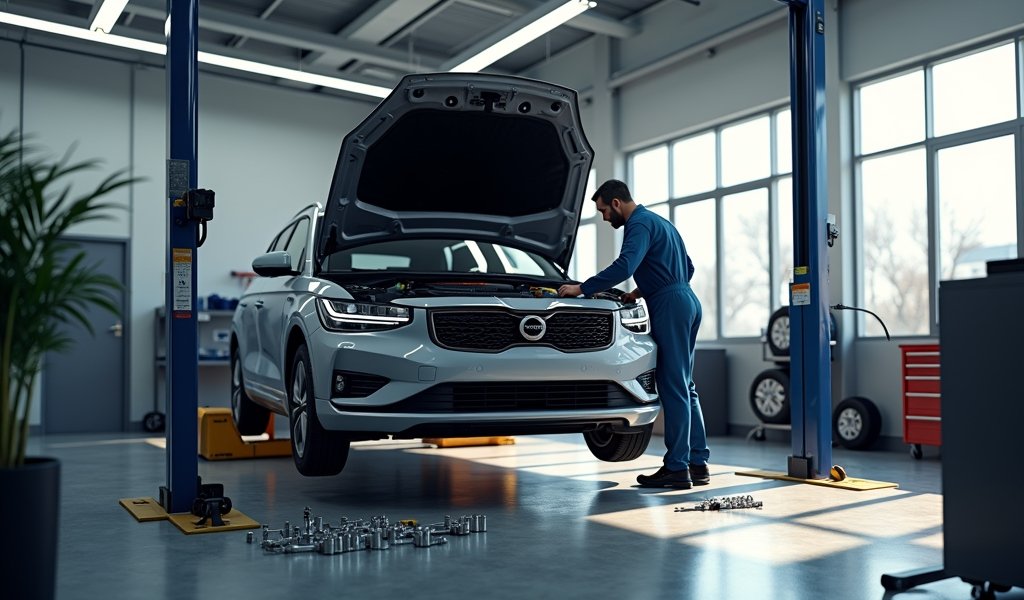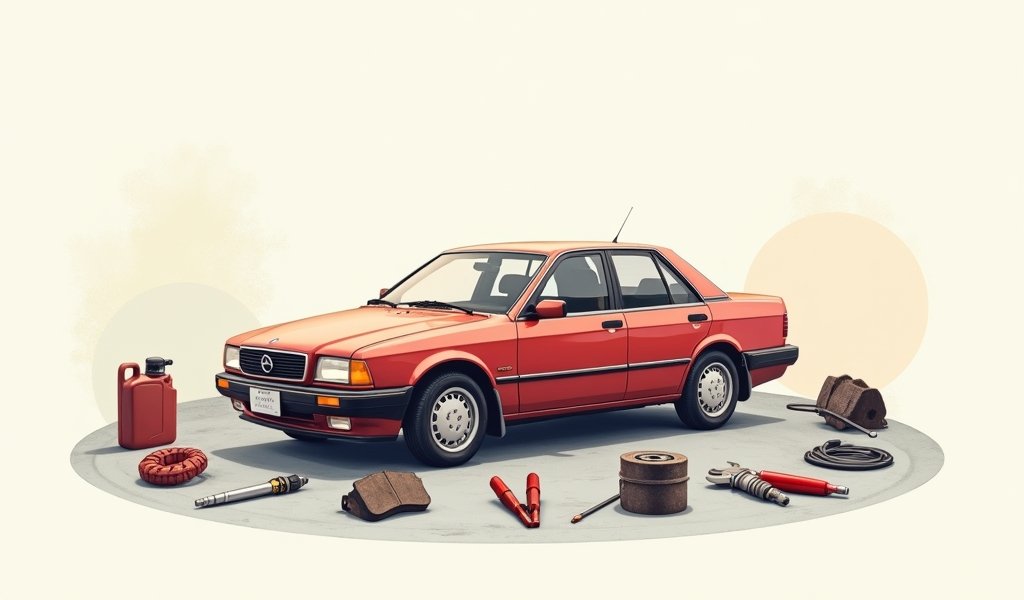Overview
This article outlines ten essential maintenance tips for used cars, including regular oil changes, filter inspections, fluid checks, battery maintenance, tire care, brake inspections, examining belts and hoses, suspension checks, interior/exterior cleaning, and following a consistent maintenance schedule. Proper preventative maintenance can extend a used car’s life to 200,000+ miles, rivaling newer models in reliability while saving thousands in emergency repair costs.
Table of Contents
- Introduction
- Tip 1: Regular Oil Changes
- Tip 2: Inspect All Filters
- Tip 3: Check Fluid Levels
- Tip 4: Battery Maintenance
- Tip 5: Tire Care
- Tip 6: Brake System Inspection
- Tip 7: Examine Belts and Hoses
- Tip 8: Suspension Check
- Tip 9: Interior and Exterior Cleaning
- Tip 10: Follow a Maintenance Schedule
- Conclusion
- Frequently Asked Questions
Introduction
Buying a used car makes great financial sense, but keeping it running smoothly requires some dedication. After 20 years of working on vehicles, I’ve seen firsthand how proper maintenance can transform an older car’s reliability and lifespan. A well-maintained used car can easily provide 200,000+ miles of faithful service—often rivaling newer models in dependability at a fraction of the cost.
This used car maintenance checklist covers the essentials that every pre-owned vehicle owner should follow. Think of it as your roadmap to avoiding those “check engine” surprises and costly emergency repairs. The beauty of preventative maintenance isn’t just about saving money (though you absolutely will); it’s about the peace of mind that comes from driving a vehicle you can trust.
Let’s dive into the 10 essential maintenance tips that’ll keep your used car humming along nicely for years to come.
Tip 1: Regular Oil Changes
If your car’s engine is its heart, then oil is definitely its lifeblood. In older vehicles, regular oil changes become even more critical as internal engine components develop wear over time.
For most used cars, especially those beyond 75,000 miles, I recommend oil changes every 3,000-5,000 miles. Yes, that’s more frequent than the 7,500-10,000 miles that newer vehicles with synthetic oil might allow, but there’s good reason for this conservative approach. Older engines typically burn more oil and accumulate contaminants faster, making fresh oil crucial for proper lubrication and heat dissipation.
Watch for these warning signs that an immediate oil change is needed:
- Oil appears dark brown or black on the dipstick
- Oil level drops quickly between checks
- Engine running louder than usual
- Oil pressure warning light illuminates
Don’t forget to replace the oil filter with every change. A fresh filter ensures contaminants stay out of your engine, while old filters can restrict oil flow. According to Consumer Reports research, regular oil changes remain the most cost-effective way to extend engine life.
Tip 2: Inspect All Filters

Your used car depends on several filters to keep systems running efficiently. These often-overlooked components deserve regular attention.
The air filter is your engine’s first line of defense against dirt and debris. In older vehicles, check it every 12,000-15,000 miles, or more frequently if you drive on dusty roads. A simple test: hold the filter up to a light source—if light doesn’t pass through easily, it’s replacement time. A clogged air filter can reduce fuel economy by up to 10% according to EPA studies.
Fuel filters prevent contaminants from reaching your fuel injectors and should be replaced every 30,000 miles in used cars. This is especially important if your vehicle has spent time sitting unused, as fuel system deposits tend to accumulate during storage.
Don’t forget the cabin air filter, which keeps the air inside your car clean and fresh. Replace it every 15,000-30,000 miles, or sooner if you notice reduced airflow from your vents or musty odors. Your sinuses will thank you!
These filter replacements generally fall into the “inexpensive but high-impact” category of maintenance—small investments that yield significant performance benefits.
Tip 3: Check Fluid Levels
A used car relies on various fluids beyond just engine oil, and each plays a crucial role in vehicle health. Make monthly fluid checks a habit, as leaks become more common in older vehicles.
Transmission fluid should appear red or pinkish and smell slightly sweet—never burnt. For automatic transmissions, check with the engine running and warmed up. If the fluid appears brown or smells burnt, it’s time for a service. In many older vehicles, transmission fluid should be changed every 30,000-60,000 miles.
Brake fluid absorbs moisture over time, which can lead to corrosion inside your brake system. Check the reservoir level monthly and note the fluid color—it should be clear to amber. Dark brown brake fluid indicates contamination and requires changing, typically every 2-3 years regardless of mileage for maximum braking performance.
Coolant should be checked when the engine is completely cool. The fluid level should be between the “min” and “max” markings on the reservoir, and the color should be consistent (green, orange, or pink depending on type). Flush and replace coolant every 30,000 miles or 2-3 years to prevent corrosion and maintain proper cooling system performance.
Power steering fluid keeps your steering smooth and responsive. Low levels cause difficulty steering and unusual noises. Check monthly and top off as needed with the correct type specified in your owner’s manual.
Maintaining proper fluid levels and quality is like giving your used car a mini-fountain of youth—it keeps everything running smoothly while preventing accelerated wear.
Tip 4: Battery Maintenance
The electrical demands on older vehicles can be particularly hard on batteries. Once your used car hits the 3-year mark, that battery deserves extra attention.
Start by keeping the battery terminals clean. That white, powdery corrosion you might spot around the connections actually restricts current flow. A simple solution of baking soda and water applied with an old toothbrush works wonders for cleaning terminals—just be sure to disconnect the battery first (negative terminal first, then positive).
Most batteries last 3-5 years, but this timeframe shrinks in extreme climates and with shorter driving patterns. Have your battery tested annually after it’s 3 years old. Most auto parts stores offer this service for free, giving you advance warning before that dreaded “click-click” of a dead battery leaves you stranded.
If your used car sits unused for extended periods, consider a battery maintainer (trickle charger). These inexpensive devices keep your battery at optimal charge without overcharging. The J.D. Power vehicle dependability studies consistently show that battery failure is among the most common causes of breakdowns—and yet one of the most preventable.
For extra peace of mind, keep jumper cables or a portable jump starter in your trunk. They’re like an insurance policy that takes up minimal space but provides maximum relief when needed.
Tip 5: Tire Care
Tires are quite literally where your car meets the road, and proper care becomes increasingly important as vehicles age. Older cars may have suspension components with some wear, making tire maintenance even more critical for safety and performance.
Check tire pressure monthly using a quality gauge—don’t rely on visual inspection. Proper inflation pressure is typically listed on a sticker inside the driver’s door jamb. Underinflated tires wear faster on the edges, while overinflated tires wear more in the center. Either situation costs you money in premature tire replacement.
Rotate your tires every 6,000-8,000 miles to ensure even wear. If you notice unusual wear patterns despite regular rotations, it might indicate alignment issues that need professional attention. An alignment check is recommended annually for used vehicles or whenever you hit a significant pothole or curb.
Here’s a tire tip many folks miss: check the age of your tires! Even with good tread depth, tires older than 6 years should be replaced due to rubber deterioration. Find the manufacture date on the sidewall as a four-digit code (2318 means the 23rd week of 2018). This is especially important for spare tires, which often age unnoticed until they’re needed.
For winter driving, consider dedicated winter tires if you live in a snowy climate. Studies by independent testing organizations consistently show that winter tires provide significantly better traction in cold, snowy conditions compared to all-season tires.
Tip 6: Brake System Inspection

When it comes to your used car’s brake system, prevention isn’t just about saving money—it’s about saving lives. As a mechanic, I’ve seen too many cases where proper maintenance could have prevented dangerous brake failures.
Listen for warning signs: squealing usually indicates wear indicators are touching the rotors, while grinding suggests metal-on-metal contact where brake pads have completely worn down. Don’t ignore these sounds! Once you hear grinding, you’re likely facing both pad and rotor replacement instead of just pads.
Visually inspect your brake pads through the wheel spokes. On most vehicles, you should see at least 1/4 inch of pad material. If they look thin, don’t delay replacement—the cost only increases as more components get damaged.
Pay attention to these additional brake warning signs:
- Vehicle pulling to one side during braking
- Vibration or pulsation in the brake pedal
- Brake pedal feeling soft or spongy
- Longer stopping distances than normal
Brake fluid should be replaced every 2-3 years regardless of mileage. This maintenance item is often overlooked, but brake fluid absorbs moisture over time, lowering its boiling point and potentially causing brake fade during hard stops.
For most used vehicles, I recommend a complete brake inspection twice yearly. This seasonal car maintenance approach ensures your braking system remains reliable through changing weather conditions.
Tip 7: Examine Belts and Hoses
The rubber components in your used car naturally deteriorate with age and exposure to engine heat. Unlike mechanical parts that often give warning signs before failing, belts and hoses tend to fail suddenly—usually at the most inconvenient times.
Inspect all visible belts for cracks, fraying, or glazing (a shiny appearance). The serpentine belt deserves special attention, as it drives multiple components including the alternator, power steering pump, and A/C compressor. On older vehicles, a failed serpentine belt can leave you stranded immediately.
The timing belt (if your engine has one rather than a timing chain) is hidden from view but crucial to inspect according to the manufacturer’s schedule—typically every 60,000-100,000 miles. A timing belt failure can cause catastrophic engine damage in interference engines, potentially turning a $500 maintenance job into a $3,000+ engine repair.
For hoses, give them a gentle squeeze when the engine is cool. They should feel firm but flexible. Excessively soft or rock-hard hoses are prime candidates for failure. Also look for bulges, cracks, or fluid seepage around connection points.
Coolant hoses deserve special attention as they’re under pressure and temperature extremes. The upper radiator hose typically fails first, but don’t overlook the lower radiator hose and smaller heater hoses.
When a used car reaches 100,000 miles, consider replacing all belts and hoses proactively if they haven’t been changed previously. This relatively inexpensive service provides tremendous peace of mind.
Tip 8: Suspension Check
Your car’s suspension does more than just provide a comfortable ride—it keeps your tires in proper contact with the road for safe handling and braking. In used vehicles, suspension components wear gradually, making changes difficult to notice during daily driving.
Watch for these suspension warning signs:
- Vehicle bouncing excessively after hitting bumps
- Nose diving during braking
- Leaning or swaying during turns
- Vehicle sitting unevenly when parked
- Knocking or clunking noises over bumps
Testing shock absorbers is fairly simple: push down firmly on each corner of your car and release. The vehicle should rebound once and then stop. If it continues bouncing, your shocks or struts are likely worn.
Ball joints and tie rod ends are critical steering components that wear over time. Have a professional check these annually once your vehicle passes 60,000 miles. While you might not notice their gradual deterioration, a failure can cause a dangerous loss of control.
Bushings—those rubber components that cushion suspension parts—deteriorate with age. They rarely cause immediate breakdowns but contribute to handling issues and accelerated tire wear when compromised. Replacing worn bushings can transform how your used car drives.
A thorough suspension inspection costs relatively little but provides valuable information about your vehicle’s condition and helps you budget for necessary repairs before components fail completely.
Tip 9: Interior and Exterior Cleaning
Vehicle cleaning isn’t just about pride of ownership—though that certainly matters! Regular cleaning actually prevents premature deterioration of your used car’s surfaces and components.
Wash your vehicle every two weeks, paying special attention to the undercarriage if you live where road salt is used. That salt is like cancer for your car’s metal components, accelerating rust and corrosion. A quality wax application twice yearly creates a protective barrier against environmental contaminants.
Don’t neglect those door jambs and drainage channels. Clogged drain holes (particularly under the windshield cowl) can lead to water intrusion and potentially expensive electrical issues. A quick blast with compressed air keeps these channels clear.
For interiors, regular vacuuming prevents dirt from grinding into carpets and upholstery. Leather surfaces benefit from conditioning twice yearly to prevent drying and cracking. Vinyl dashboards should receive UV protectant to prevent fading and cracking from sun exposure.
Here’s an often-overlooked maintenance tip: keep your air conditioning system fresh by running it weekly, even in winter. This prevents seal deterioration and bacterial growth that causes musty odors. Additionally, using the AC helps remove humidity from the cabin, which prevents foggy windows.
Small rust spots should be addressed immediately before they spread. Touch-up paint is inexpensive insurance against larger body repair bills down the road. Remember: rust never gets better on its own—it only spreads.
Tip 10: Follow a Maintenance Schedule
The most comprehensive car maintenance schedule by mileage is one that you actually follow. Every used car benefits from a consistent, documented maintenance routine.
Start with your owner’s manual if available—it provides the manufacturer’s recommended service intervals. For older vehicles, consider shortening these intervals slightly. For example, if the manual suggests transmission fluid changes every 60,000 miles, consider 45,000 miles instead to compensate for age and wear.
Create a maintenance log, whether digital or paper-based. Document every service with date, mileage, and work performed. This not only helps you stay on schedule but also significantly increases your car’s resale value by demonstrating proper care to potential buyers.
Major services to track by mileage include:
- 30,000 miles: Transmission service, fuel system cleaning, throttle body service
- 60,000 miles: Cooling system flush, brake fluid replacement, spark plugs (some engines)
- 90,000 miles: Power steering flush, differential fluid change, timing belt (if equipped)
- 120,000 miles: Major tune-up, suspension inspection, all fluids replacement
Remember that modern vehicles benefit from software updates too. Check occasionally with your dealer’s service department about potential electronic control module updates that might improve performance or fix known issues.
Know when to seek professional help versus DIY maintenance. While checking fluids and changing filters are generally straightforward, systems like fuel injection, emissions controls, and modern braking systems often require specialized diagnostic equipment for proper service.
Conclusion
Maintaining a used car doesn’t have to be complicated or expensive. The key is consistency and addressing small issues before they become major problems. These ten maintenance tips represent the essence of what I’ve learned in two decades of working with vehicles of all ages and conditions.
The most reliable used cars I’ve seen aren’t necessarily the most expensive models or those with the lowest mileage—they’re the ones that received regular, attentive care from their owners. Your used car can easily provide 200,000+ miles of dependable service with proper maintenance, often rivaling newer models in reliability at a fraction of the cost.
Remember that preventative maintenance is always more economical than emergency repairs. That $30 oil change prevents a $3,000 engine replacement. That $100 timing belt replacement prevents a $2,500 valvetrain rebuild. The math simply works in favor of regular maintenance.
At Knows Your Car, we understand that your vehicle is more than just transportation—it’s a significant investment that deserves proper care. If you’re ever uncertain about a maintenance item or need professional assistance, our team is here to help guide you through the process with honest, transparent service.
What maintenance tips have helped keep your used car running smoothly? Share your experiences in the comments below!
Frequently Asked Questions
How often should I change the oil in my used car?
For most used cars, especially those with over 75,000 miles, change the oil every 3,000-5,000 miles. Older engines typically burn more oil and accumulate contaminants faster than newer ones.
What’s the most important maintenance item for a used car?
Regular oil changes are the single most important maintenance item for extending engine life. Fresh oil provides proper lubrication and cooling while removing contaminants that cause premature wear.
How can I tell if my used car needs new brakes?
Listen for squealing or grinding noises, and watch for warning signs like vibration during braking, longer stopping distances, or a soft/spongy brake pedal. Visually inspect brake pads through wheel spokes—they should have at least 1/4 inch of material remaining.
Should I use synthetic oil in my older car?
Synthetic oil is generally beneficial for older engines due to better temperature stability and cleaning properties. However, if your engine has high mileage and has always used conventional oil, switching might cause leaks as synthetic oil can flow into areas where gaskets have hardened.
How do I know when my used car needs new tires?
Check tread depth using the penny test—insert a penny with Lincoln’s head upside down into the tread groove; if you can see the top of Lincoln’s head, it’s time for new tires. Also replace tires that are over 6 years old regardless of tread, as rubber deteriorates with age.

